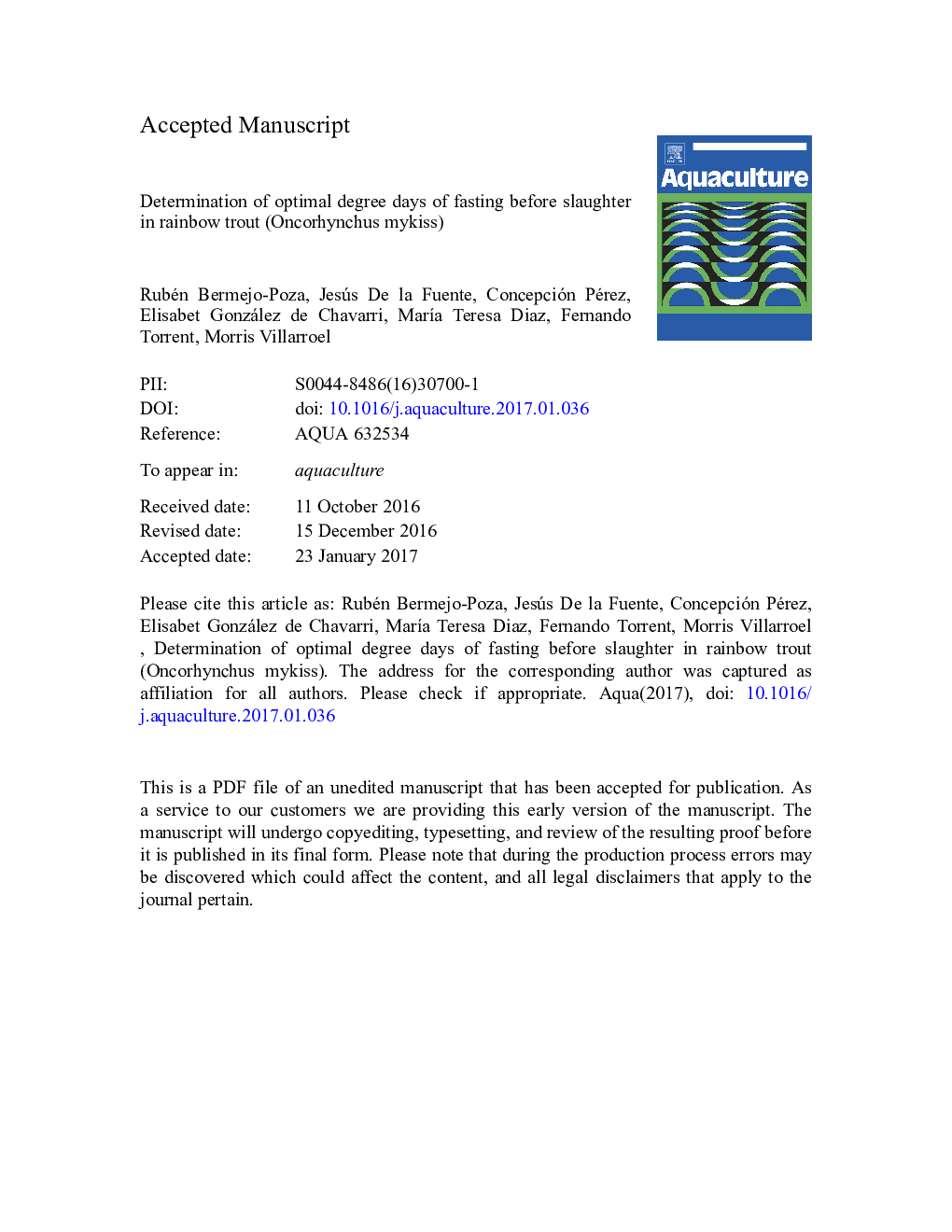| Article ID | Journal | Published Year | Pages | File Type |
|---|---|---|---|---|
| 5539081 | Aquaculture | 2017 | 24 Pages |
Abstract
Pre-slaughter fasting is a common practice in aquaculture to ensure emptying of the digestive tract, but little is known about how long fish should be fasted, in terms of degree days (°C days), to clear the gut without affecting their welfare or flesh quality. In this study, 180 rainbow trout (Oncorhynchus mykiss) were fasted for 3, 4, 5, 6, 7 and 9 days (17.2, 22.3, 28.6, 35.3, 41.8 and 55.3 °C days, respectively) and different morphometric, hematological and flesh quality parameters were measured. The slaughter weight, relative growth and hepato-somatic index did not decrease until after 7 days of fasting (41.8 °C days) and stomach content was similar and near zero after 4 days of fasting (22.3 °C days). Conversely, fasting time increased carcass yield. Plasma concentrations of cortisol, glucose and creatine phosphokinase enzyme were lower with increasing days of fasting. However, trout slaughtered after 5 days of fasting (28.6 °C days) had a higher flesh pH at 0 h post-mortem than 3 and 4 days fasted trout and, consequently, earlier establishment of rigor mortis. Furthermore, liver color could be useful as a stress indicator since its hue decreases after 5 days of fasting (28.6 °C days). In conclusion, a pre-slaughter fasting period from 17.2 °C days to 22.3 °C days makes possible to obtain a complete emptying of the digestive system in rainbow trout and simultaneously it can minimize the stress response with consequent better flesh quality.
Related Topics
Life Sciences
Agricultural and Biological Sciences
Aquatic Science
Authors
Rubén Bermejo-Poza, Jesús De la Fuente, Concepción Pérez, Elisabet González de Chavarri, MarÃa Teresa Diaz, Fernando Torrent, Morris Villarroel,
